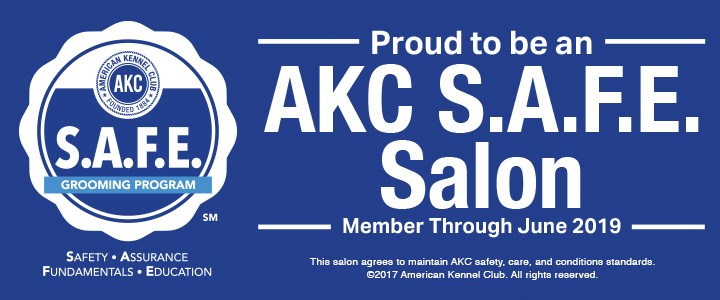When the weather gets warm, it’s inevitable that many dog groomers start to get requests for dog shaving. Many pet owners may also consider this activity themselves, for their dog, rather than taking them to the groomer’s. Most often, the reasons cited are to keep the dogs cool or more comfortable during warmer weather – a natural, loving thing that a pet owner would do, of course! But dog shaving isn’t always the best way to achieve those results – in some cases, it can be downright counter-productive.
Pet owners generally know that a dog’s coat helps to keep them warm in colder months. Fewer people are aware that their coat also helps to keep them from overheating. This seems counter-intuitive – people don’t wear coats outside in warm weather! But dogs aren’t people. The way their skin and hair respond to temperature changes, and the way their body is designed to do so, is very different than a human’s. Dog skin is thinner than human skin, and their hair provides both protection and insulation. Their coat actually serves to regulate body temperature, even in warm weather. It insulates their skin, and slows down the heat absorption into their body. The net result is that a shaved dog can actually overheat more quickly than a dog with a healthy coat. Their thinner skin is also more prone to sunburns than humans, and more likely to get injured, too.
So, is dog shaving necessary, or even a good idea? Read on and we’ll discuss the details on dog coats, temperature regulation, and everything you need to know to answer that question for your particular pet.
Dogs with Double Coats
To start, it’s important to know whether your dog has one or two coats. Certain breeds actually have two coats, and this feature isn’t restricted just to larger dogs, either. Breeds with two coats, known as double-coated, include:
- German shepherds
- Golden retrievers
- Labradors
- Chows
- Bernese
- Corgis
- Pomeranians
- And many others
Double-coated dogs effectively have two separate layers to their coats. The undercoat is made up of shorter hairs, which are fairly dense and closely spaced. The top coat is made of longer hairs, and is more sparsely spaced. Breeds with double-coats will naturally shed their undercoat when it starts to get warmer, as it is primarily used to keep them warm during winter months. This is known as “blowing” their coat. It may seem like extreme shedding, but it’s a natural and healthy part of the lifecycle for double-coated breeds.
Dogs who blow their own coats are effectively self-maintaining. They don’t require haircuts or shaving in order to keep them cool during warmer months. They are left with just an outer coat, which is plenty of protection and insulation for warmer weather. It doesn’t grow endlessly as some breeds’ coats do, either – it will only grow to a certain length and then stop growing. So, dogs who have double coats do NOT require haircuts or shaving. Not only is it counter-productive, but it can actually cause permanent damage to their coats, and make it harder for them to regulate their body temperature year-round.
Dogs with Single Coats
Of course, not all dogs have double coats. Many, in fact, have single coats – typical of short-haired dogs. They lack the undercoat present in double-coated dogs, and simply have a single, short top coat. Like a double-coated dog’s top coat, however, it will only grow out to certain ideal length, then stop growing. Dogs like boxers and Greyhounds fall into this category. Some shedding is to be expected, but they won’t go through the kind of coat blowing in the late winter/early spring that double-coated dogs will. Single-coated dogs should not be shaved, either. Regular brushing and periodic bathing is more than sufficient to maintain their coat, and the single coat is designed to help them with temperature regulation as it is.
ALSO READ – Dog Grooming – Ear Plucking
Breeds with Special Needs
Some breeds have special needs, and have either single coats or double coats, that don’t stop growing at a certain length. This means they need regular trims and haircuts to maintain their hair, prevent debris build-up and matting, and maintain their overall health. Dog breeds in this category include:
- Cocker spaniels
- Schnauzers
- Lhasa apsos
- Yorkies
- Maltese
- Shih tzus
- And similar breeds
The dogs in this category don’t need a low-cut shave, either. A simple haircut, even a short haircut is sufficient. Extremely short or shaving cuts are to be avoided, as it increases the likelihood that their skin can burn, especially in sunny summer months.
Keeping Your Double-Coated Dog Cool (Without Resorting to Dog Shaving)
While the motivation is love and the comfort of your dog, keeping your double-coated dog cool via dog shaving of their hair is simply not a good idea. There are, however, some tips you can follow to reduce shedding out-of-season, and help to keep the dog cooler and more comfortable.
- Professional groomers can help assist the natural coat blowing process, and augment the blowing process by helping to remove dead or excess hair – without removing their top coat or causing permanent damage the way shaving can.
- Anti-shedding treatments offered by many groomers and pet specialists for double-coated dogs typically involve this process.
- This not only cuts down on shedding during warmer months, but helps keep your pet cooler.
- Trimming excessively long hair, even in dogs whose hair stops growing, is certainly an option, and can help keep them clean. Trimming legs, feet, ears, and similar areas, for appearance and hygiene, are generally fine, regardless of breed or coat type.
- Remember, shade, water, and even sunscreen are all good ways to help keep your pet safe, cool, and comfortable in the summer months.
ALSO READ – What to Do About Your Dog’s Irritated Skin After Grooming


